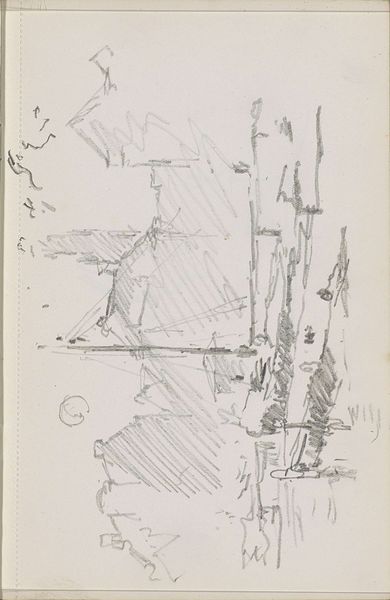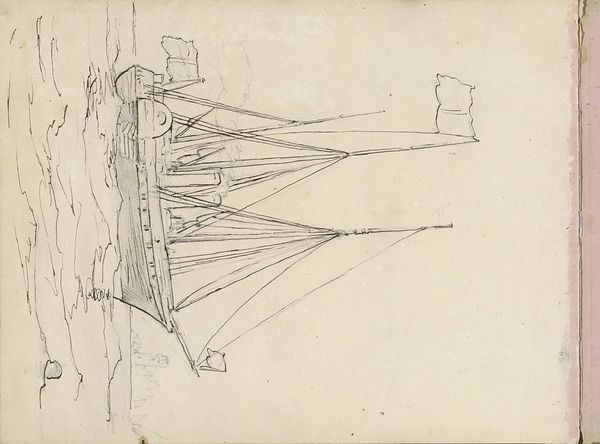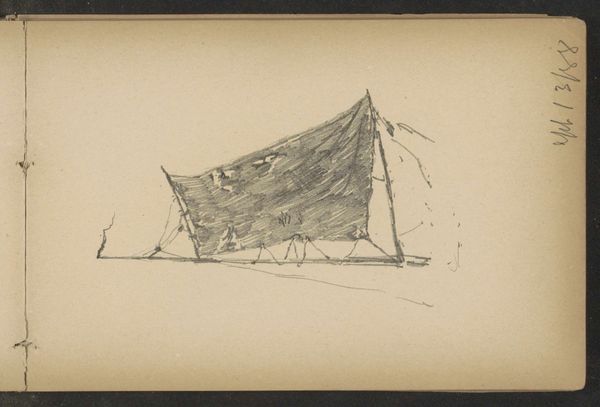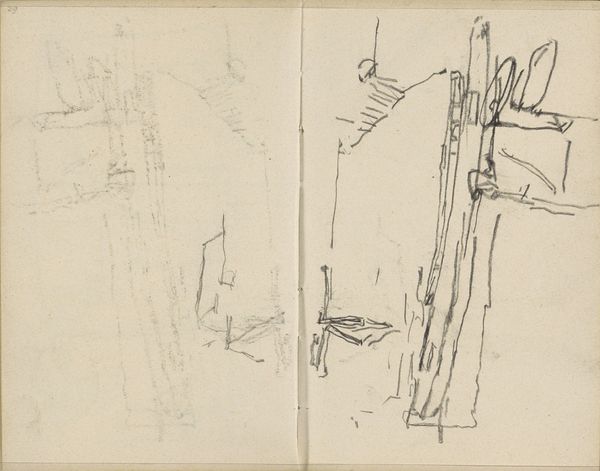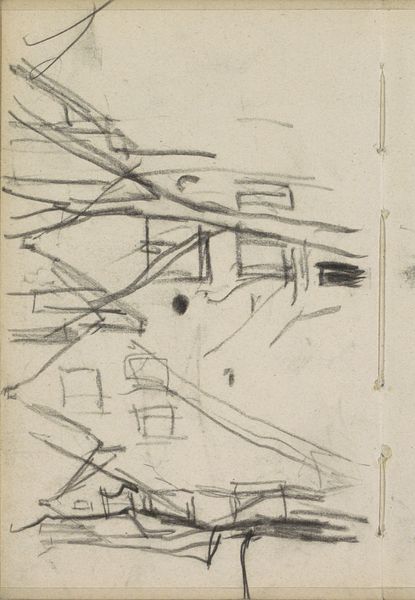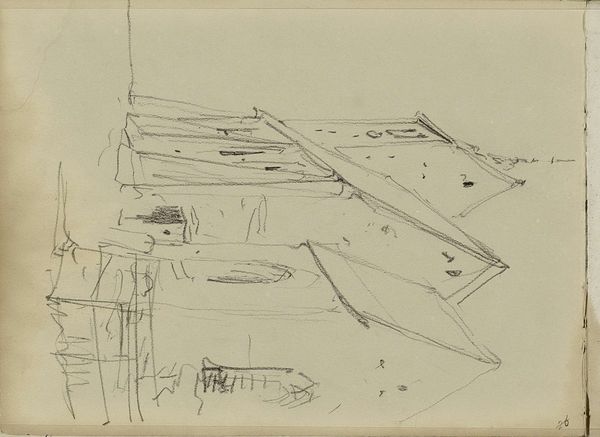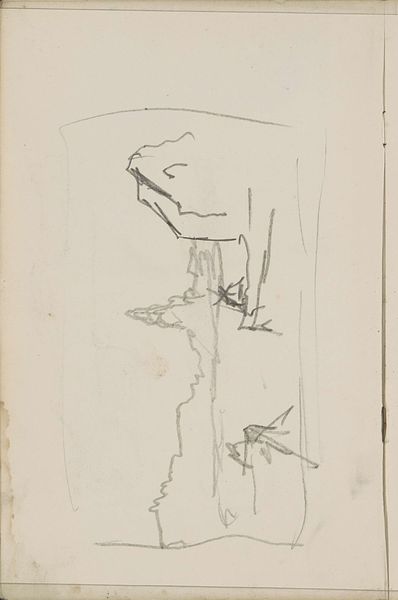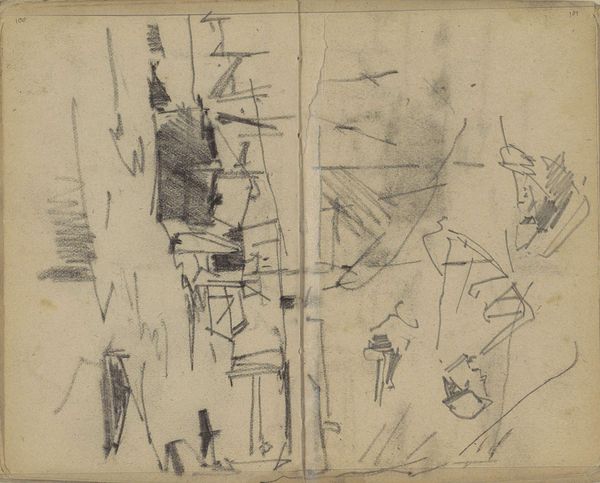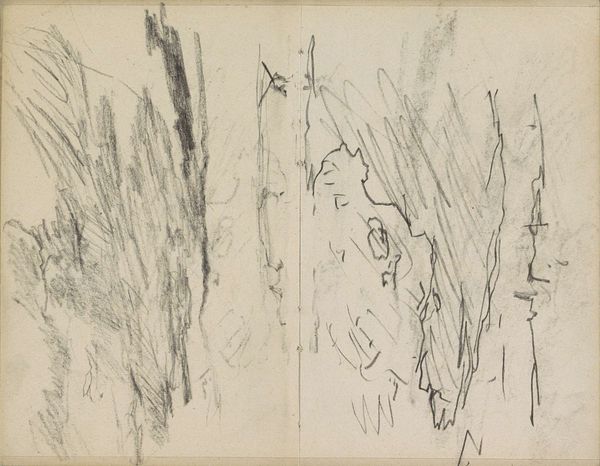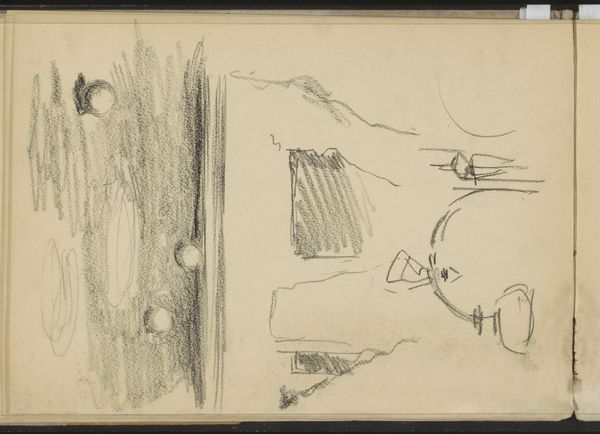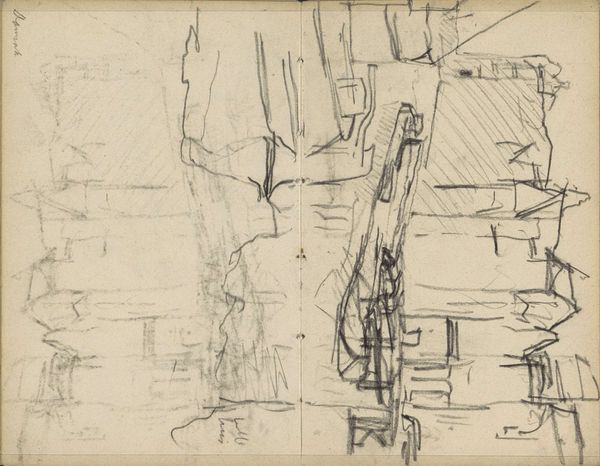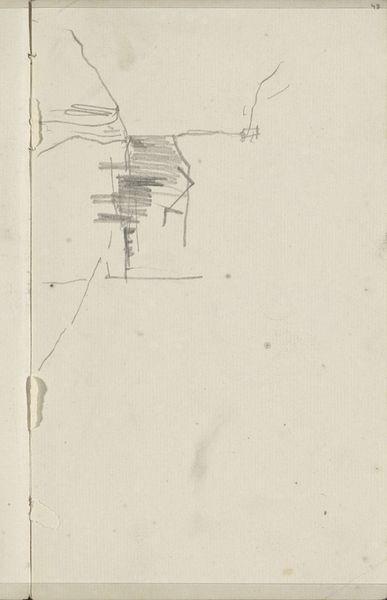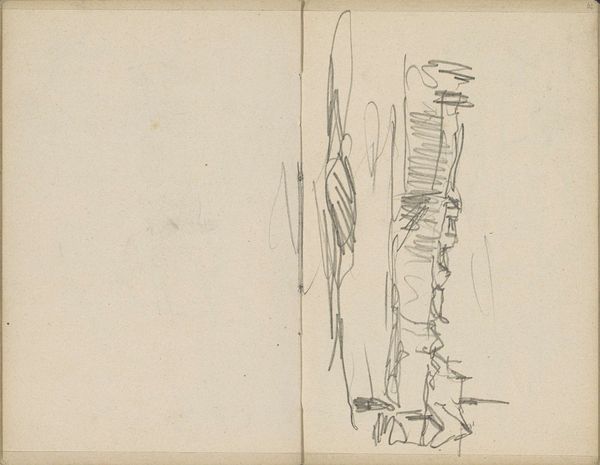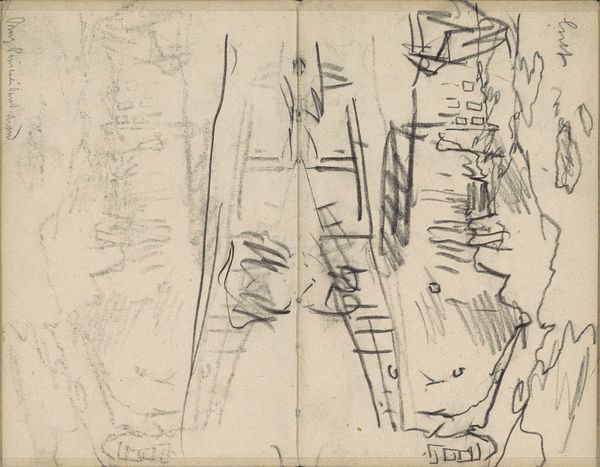
drawing, pencil
#
drawing
#
impressionism
#
pen sketch
#
sketch book
#
landscape
#
personal sketchbook
#
sketchwork
#
ink drawing experimentation
#
sketch
#
pen-ink sketch
#
pencil
#
line
#
pen work
#
sketchbook drawing
#
storyboard and sketchbook work
#
sketchbook art
Copyright: Rijks Museum: Open Domain
Curator: I am immediately drawn to the immediacy and simplicity of this sketch, a graphite drawing by Alexander Shilling, titled "Zeilboot voor de kust van Scheveningen," dating from around 1888-1889. The lines are so spare yet evocative. Editor: Yes, a fleeting moment captured in such an accessible form. The quick strokes remind us that drawings like these were often studies, experiments, preliminary explorations for larger projects or simply artistic exercises. Do we know where the sketchbook was manufactured? Curator: The social and cultural impact of Scheveningen, a bustling seaside town, is undeniable here. The fishing industry was a significant economic force at that time. The sailboat likely represents leisure and commerce in that region. Editor: True, but also the inherent availability of these materials to middle class artist. What grade of pencil? The availability of paper stock must have aided the Impressionist and other artists who wanted to quickly jot down observations from real life. I find the texture of the paper evident in the marks the artist made—did this affect Shilling's handling of the media? Curator: The artwork shows Shilling's impressionistic inclination. I would also call your attention to how Shilling has recorded this seaside scene in pencil on a piece of paper torn out of a sketchbook, rather than painting it with oils. Editor: Right, that very act challenges our preconceptions of value. Was the accessibility of these materials—graphite, paper—part of Impressionism's democratization of art making, making possible a new relationship between artist and public? Curator: Perhaps! Art institutions may also play a role. One might question how Shilling’s quick sketches in pencil might contrast against his finished academic paintings—were those other works considered to have more social and cultural value within the established art world? Editor: Exactly. By studying the sketchbook itself we can glean details on materials and access to artistic resources within particular socio-economic circumstances. Curator: I think that in his loose lines and careful observation, Shilling gives us a look into the landscape he knew and how societal circumstances shaped art making at that time. Editor: Ultimately it opens our eyes to the raw essence of Shilling's initial impression—the materials employed enabling direct access to his perceptions.
Comments
No comments
Be the first to comment and join the conversation on the ultimate creative platform.
